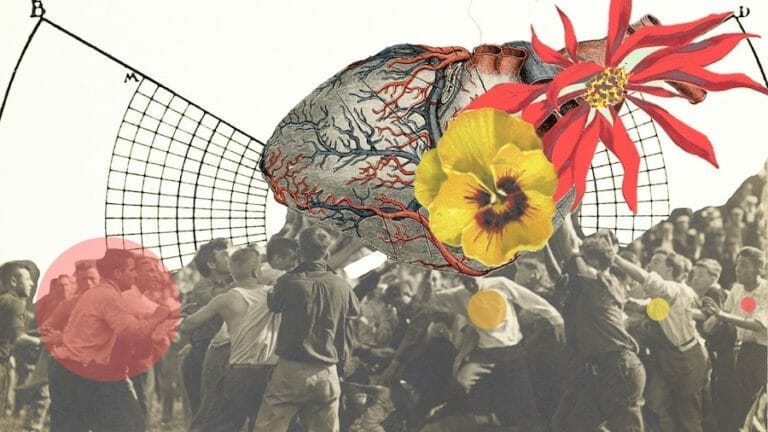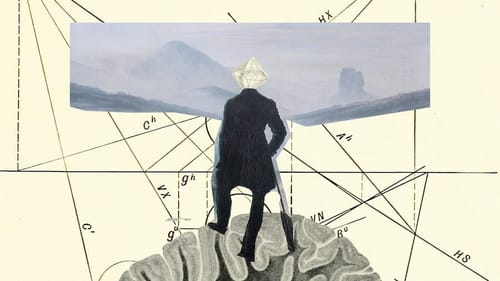Enlightenment – Intro
Enlightenment (from Old High German arliuhtan “to illuminate”, Middle High German erliuhtunge “to light up”, “enlightenment”; Latin illuminatio), also **illumination**, refers to a religious-spiritual experience in which a person believes that his everyday consciousness has been transcended and he has obtained everlasting insight into – however pronounced – holistic reality. In today’s common usage, “enlightenment” is usually understood as a sudden realization or inspiration.
There are different opinions about the processes that are described by the term enlightenment in the religious sense and the reasons for their occurrence, which are related to the respective philosophical or religious background of the person making the judgement. In some cases, enlightenment is understood as a spontaneous breakthrough or as the final result of a process of spiritual practice and development, according to other interpretations it is due to divine grace, and still others believe it is a combination of both. Usually, the idea of enlightenment is associated with the assumption that it brings about a profound and lasting change in the personality.
In European traditions, enlightenment is often counted among mystical experiences. In the terminology of Asian religions, there are no expressions that correspond exactly to the European term “enlightenment,” but comparable phenomena play a central role in many Eastern traditions (see Bodhi).

History of terms
Ancient
The term “enlightenment” originates from the ancient philosophical metaphor of light. Its origin was in passages in Plato’s dialogue Politeia and in the Seventh Letter attributed to Plato. In the Politeia, Plato states that it is first necessary to find out what righteousness is, and the result of this investigation should then be applied to individuals. One should compare the state and the individual determination of righteousness and rub them against each other like two pieces of fire wood, one might see justice flash out like a spark, that is, one will suddenly arrive at the realization of its general nature. [1] The author of the Seventh Letter writes that the knowledge of the meaning of Plato’s “unwritten doctrine” is the fruit of the work of philosophers, but it does not arise in the soul gradually, but suddenly, like a fire kindled by a spark that has jumped over. It then continues to expand.[2] One should rub names, explanations, views and perceptions against each other, testing them, suddenly insight and understanding about every object could light up.[3] According to the Seventh Letter, the lighting up forms the conclusion of a five-stage process of knowledge, the first four steps of which are discursive.
The Neoplatonic metaphysics of light is linked to these passages and to the metaphor of light in Plato’s parables of the sun and parables of the cave. In the 3rd century Plotinus, the founder of Neoplatonism, developed a doctrine of the vision of the light of the One. Thereby an enlightenment of the seeing philosopher occurs in the sense of the religious concept of enlightenment, which is still common today.
Middle ages and modern times
In Middle High German, the words erliuhten and erliuhtunge were used in both a physical and a figurative religious sense.[5] Even in the early modern era both meanings of “enlighten” and “enlightenment” were common.[6]
In common usage in the 20th and 21st centuries, “enlightenment” primarily means “sudden realization,” “conceit,” “flash of thought,” “inspiration.” This usage of the term ties into the religious one, but it often involves a non-religious context. A sudden, often miraculous, clarity is gained about a question or problem, and the impressiveness of such a lightning-like realization is meant to be emphasized by the term “enlightenment,” which is reminiscent of religious enlightenment experiences.[7]

Buddhism
→ Main article: Bodhi
The concept of awakening (Sanskrit bodhi), often inaccurately translated as “enlightenment,” has a central meaning in Buddhism. It is found in “Buddha” (“the awakened one”) and “Bodhisattva.” Bodhi comes from the Sanskrit root budh, which means “to awaken, to realize, to perceive, to understand.”
There are two successive stages of Buddhist awakening. The first represents individual liberation from the cycle of suffering of sentient beings, the cycle of rebirths (samsara). The awakened person has removed all causes of suffering from his mind and experiences only peace. This is called “attainment of nirvana.” According to the teachings of Mahayana Buddhism, there is a second stage of development at which full awakening occurs, with which additional comprehensive knowledge is attained.
According to Buddhist tradition, Siddhartha Gautama, the historical Buddha, attained the state of an Awakened One in Bodhgaya after meditating under a poplar fig for many weeks. Sometime after that, he began to share his knowledge in his teachings. His teaching stated that every living being had the potential to attain permanent peace and bodhi. He taught for about 45 years and died at an old age. According to Buddhist tradition, he entered Parinirvana.

According to the teachings of Theravada Buddhism, the Buddhist practitioner strives for Bodhi in order to leave the cycle of suffering of rebirths. In Mahayana Buddhism, on the other hand, the goal is to develop the Bodhi mind (Sanskrit bodhicitta). This means that the practitioner wants to attain bodhi for the benefit of all sentient beings. He does not want to enter nirvana until all other sentient beings have also attained bodhi. This is expressed in the bodhisattva vow.
The two common translations of bodhi as “enlightenment” or “awakening” clarify in their different accentuation two different doctrines of Mahayana: the concept of spontaneous enlightenment (Huineng) and that of gradual meditative self-perfection (Shenxiu).[8] According to these doctrines, spontaneous enlightenment is also not a one-time, final process. Rather, all masters have spent decades deepening their attained insight, often with other masters. The idea of being able to achieve “enlightenment” in a flash is said to be detrimental to serene, patient meditative practice.
Zen Buddhism refers to corresponding experiences as satori, but the term Kenshō also belongs in this context.
Jainism
In Jainism, as in other traditions of Indian origin, the term bodhi is common for enlightenment. As honorific titles for Mahavira, the founder of the religious community, “Jina” and also “Buddha” are used. The literal meaning of bodhi is “perfect knowledge” or “wisdom” (whereby a person becomes a Buddha or Jina), the enlightened or enlightened mind of a Buddha or Jina. As in Buddhism and Hinduism, enlightenment in Jainism is synonymous with liberation from samsara.
Jainism assumes that through every activity of man, fine matter flows into the soul (jiva) and attaches itself to it. The Jainas call this matter karma. It binds the soul. In Jainism, through asceticism, one strives to destroy the karma that has entered the soul and in this way end entanglement in the cycle of suffering. Omniscience is achieved when the soul, by destroying the invaded karma, gains unlimited possession of its natural abilities (sight, cognition, power, bliss) and thereby unlimited knowledge.
Hinduism
In Jnana Yoga the term Jnana is used for “higher knowledge”. In Advaita philosophy, this spiritual knowledge includes the final understanding of the unity between Atman (individual soul) and Brahman (absolute consciousness, world soul). The goal is salvation (moksha) from the cycle of rebirths (samsara).
In Raja Yoga, the highest stage is Samadhi, the complete tranquility of the mind. The ultimately desired stage is Nirvikalpa Samadhi, the formless state in which there is no longer a distinction between subject and object and oneness with Brahman is achieved. Nirvikalpa samadhi, however, is considered by some to be a temporary state. The permanent state of non-duality is considered to be Sahaja Samadhi, the natural state in which the universal Self is realized during all activities, after the limited ego has been abolished.
In Samkhya philosophy, the term buddhi (“Realization”) was established. The aim of Samkhya as well as Yoga is to bring about a distinction between Purusha, the absolute spirit, and Prakriti, the primordial matter. Prakriti includes the elements, sense perceptions, thought (Manas), discrimination (Buddhi), and ego consciousness (Ahamkara). Yoga like Samkhya is strictly dualistic, unlike Advaita Vedanta. In Hindi, buddhi today means “mind, intelligence, knowledge.”
Daoism
Daoist enlightenment is explained as attaining the eternal Dao and becoming one with it (see Zhenren, Daoist Mysticism). Daoism does not refer to a divine entity, but the traditionally worshipped gods can play a role. The fundamental work for religious Daoism is the Daodejing of Laozi, in addition, a variety of methods for attaining enlightenment are presented in the Daozang.
The Daoists say: “To return to your true being, you must become a master of stillness. Sit motionless like a stone and let your mind become still. Turn the mind inward and contemplate the inner glow.” Unlike Indian religions, Daoism does not assume a cycle of rebirths.
The difference between Buddhist Nirvana and the Dao is that the Dao is a transcendent principal of action in the manifested world. It is considered the Creator of everything, the only True Being. The Dao represents the Order of things, so that every being and everything has its own way, its own Dao. Daoism is not about overcoming a world considered illusory, as in other traditions, but about finding harmony between the microcosm and the macrocosm.
Judaism, Christianity, Islam
Experiences of enlightenment are not a primary religious goal in Judaism, Christianity and Islam, but the fulfillment of God’s will is considered the essential thing. Nevertheless, there are many reports of enlightenment experiences, especially in the Christian cultural sphere.
Christianity
Augustine believed that all human cognition is made possible only through enlightenment. In his early writing _On the Teacher_, he paraphrases this assumption by referring to the “inner teacher,” the “Word of God,” which instructs every human being about everything he should know: the world, himself, and God. Man can only know something because God enlightens man. Just as the eye cannot perceive anything without the light of the sun, man cannot know anything without the Light of God. The knowledge of God happens in the enlightenment by God Himself. Together it is the Divine Act of Grace and the human act of going beyond oneself.[9]
In Christian asceticism, according to Pseudo-Dionysius, who based his model on Platonic ideas, enlightenment (Greek photismos_ represents the second of the three stages of mystical cognition. In the 13th century, this tripartite division is taken up both by the Carthusian Hugh de Balma in his writing Viæ Sion lugent and by the Franciscan Bonaventure in De triplici via. In both, the Latin term via illuminativa is found. While Hugo understands this path of illumination mystically according to Dionysius, Bonaventure understands it as a stage on the path to perfection.[10]
In scholastic philosophy, the “light of knowledge” (lumen intellectuale), which is inherent in every human being and enables him to gain knowledge, is an image of the uncreated light, in which man has a share through the knowledge of the eternal images of being.[11]
In the Eastern Churches, in the context of enlightenment, light phenomena such as the Tabor Light play a more important role than in the Western Churches. Particularly among Orthodox monks, individual enlightenment continues to be an important goal; enlightened ones are sought out by the parishioners and held in extremely high esteem, especially as spiritual fathers and starets. These are usually not priests or theologians.
Brightness and light phenomena are known in all Christian churches and are also found in the iconographic representations (halos) and also in near-death reports.
Martin Luther is deeply rooted in the mystical tradition. His own experiences of God, many years of life as a monk, and writings by the mystic Johannes Tauler gave him the strength and courage to formulate and steadfastly defend his Reformation doctrine of justification “By faith alone” as well as his doctrine of the “Universal priesthood of all believers.” Similar to many mystics, he saw and described God as a bridegroom and the human soul as a bride; precisely for this reason, he saw no need for church mediation services in such a love relationship. Many of his successors hold rather skeptical attitudes toward mysticism.[12]

Islam
The representatives of the mystical current within Islam are the Sufis. Their primary goal is to come as close to God as possible, leaving behind their own desires. In doing so, God or Truth is experienced as “the Beloved.” The core of Sufism is thus the inner relationship between the “lover” (Sufi) and the “beloved” (God). Through love, the Sufi is led to God, whereby the seeker strives to experience the truth already in this life and not wait for the hereafter. This is clearly reflected in the principle of _dying before one dies_, which is followed throughout Sufism. To this end, Sufis try to fight the urges of the lower soul or tyrannical ego (an-nafs al-ammara) in such a way that they are transformed into positive qualities. In this way, one can pass through individual stages, the highest of which is the pure soul (an-nafs al-safiya).
However, this last stage is reserved exclusively for the prophets and the most perfect saints.
The mystical experience of God is the state of oneness (tauhid) with God, which could best be described as “enlightenment” (Ischraq, Arabic išrāq; cf. Shihab ad-Din Yahya Suhrawardi as representative of the philosophical-mystical direction of išrāq)[13], even though this term is not used in Islam.
Judaism
The basis of Kabbalistic traditions is man’s search for the experience of a direct relationship with God. A reinterpretation by Isaac Luria in the 16th century emphasizes Creation and Salvation.
Western esotericism
The term _enlightenment_ has often been used in connection with Asian religious traditions over the past two centuries in various spiritual-religious communities, teachings, and contexts. In the recent past, Jiddu Krishnamurti and Aurobindo Ghose, for example, were considered enlightened teachers, although their reception in the West often differed greatly from that in the Indian cultural sphere. Osho was also considered enlightened.
The author Eckhart Tolle, who describes his “spiritual awakening” in his first book, draws on elements from various traditions such as Christian Mysticism, Sufism and Buddhism in his works. Other authors have also reported such experiences. In many cases, the need to share this with friends and fellow humans is reported. However, it is difficult or impossible for “unenlightened” people to comprehend or understand the State of consciousness of “enlightenment”. Osho proposed this area as a field of research for psychology in the 1970s. Transpersonal psychology also took up the topic.
Since the mid-1990s, the “Satsang” movement has been spreading in Europe and the USA. Its spiritual teachers (such as Gangaji and her husband Eli Jaxon-Bear, Cedric Parkin, Pyar Troll-Rauch, Madhukar), who mostly refer to Ramana Maharshi and H. W. L. Poonja as teachers and predecessors, are considered enlightened by their followers. The origin of the movement is Advaita-Vedanta, which aims at attaining the impersonal divine.
The American spiritual teacher Andrew Cohen coined the term “evolutionary enlightenment.” His idea is that not only the so-called _Higher Self_ should evolve, but also the _Higher We_.
